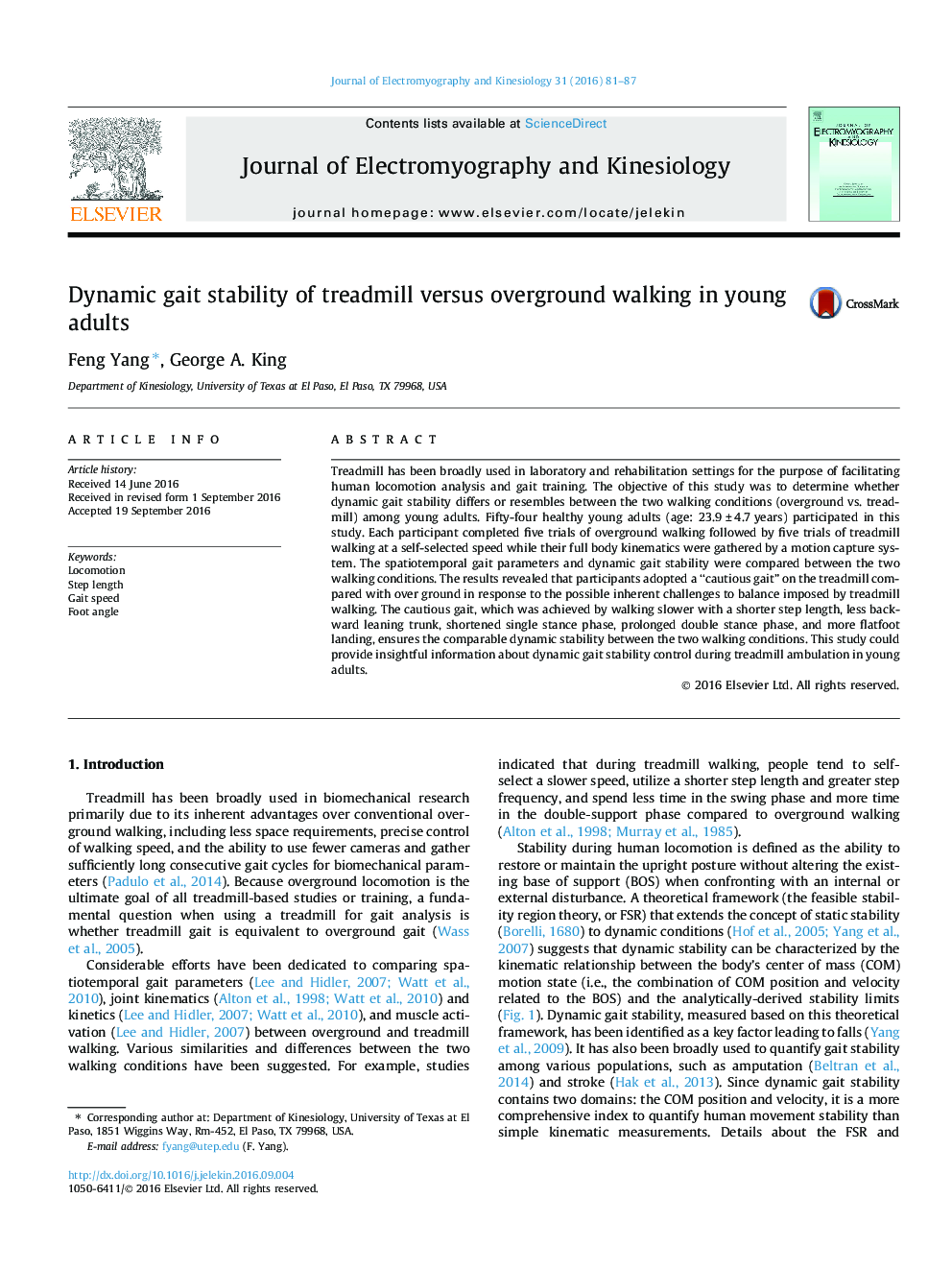| Article ID | Journal | Published Year | Pages | File Type |
|---|---|---|---|---|
| 4064350 | Journal of Electromyography and Kinesiology | 2016 | 7 Pages |
Treadmill has been broadly used in laboratory and rehabilitation settings for the purpose of facilitating human locomotion analysis and gait training. The objective of this study was to determine whether dynamic gait stability differs or resembles between the two walking conditions (overground vs. treadmill) among young adults. Fifty-four healthy young adults (age: 23.9 ± 4.7 years) participated in this study. Each participant completed five trials of overground walking followed by five trials of treadmill walking at a self-selected speed while their full body kinematics were gathered by a motion capture system. The spatiotemporal gait parameters and dynamic gait stability were compared between the two walking conditions. The results revealed that participants adopted a “cautious gait” on the treadmill compared with over ground in response to the possible inherent challenges to balance imposed by treadmill walking. The cautious gait, which was achieved by walking slower with a shorter step length, less backward leaning trunk, shortened single stance phase, prolonged double stance phase, and more flatfoot landing, ensures the comparable dynamic stability between the two walking conditions. This study could provide insightful information about dynamic gait stability control during treadmill ambulation in young adults.
